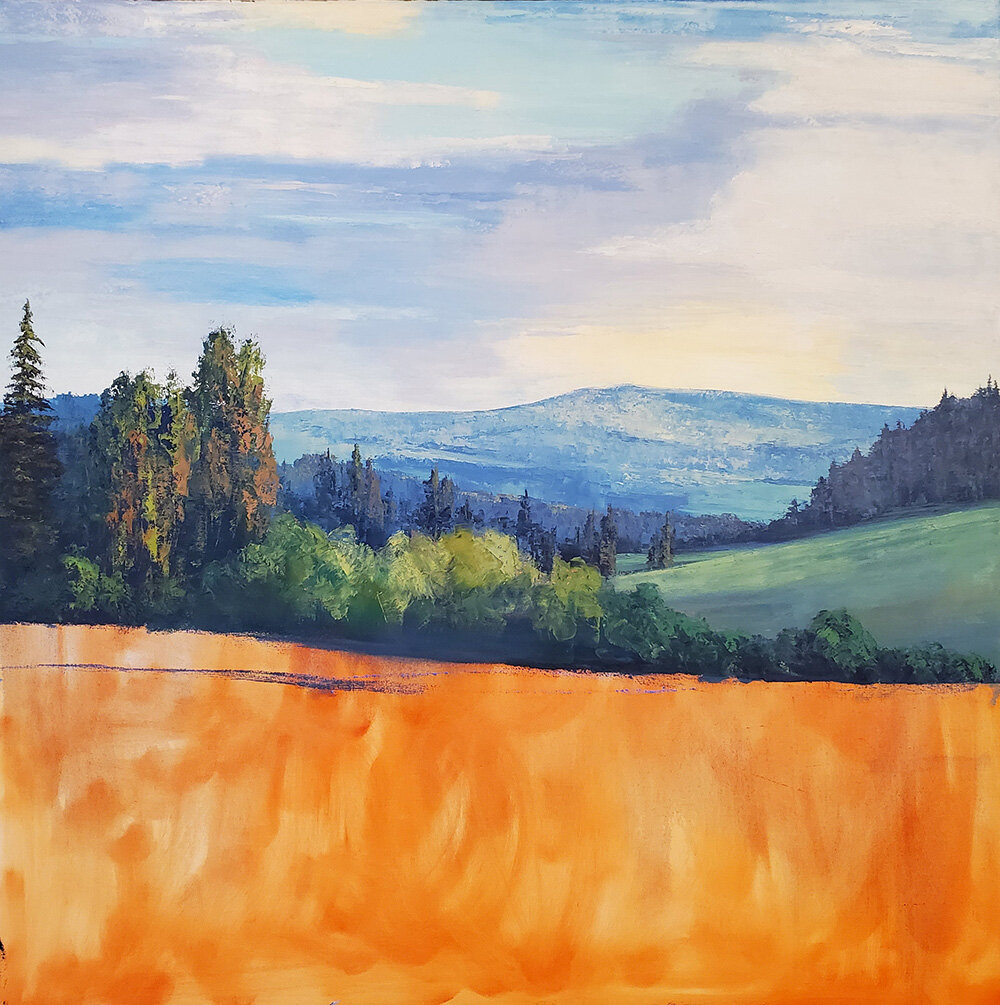Early on in my career, I painted exclusively on-site (“en plein air”), using relatively small canvases (generally less than 16x20 inches), which I approached with an wet-into-wet (“alla prima”) method, finishing in one session, no back-tracking allowed. My second, nap-resistant, child forced my transition into the studio, where I learned to accommodate 20-minute sessions, with many returns to the same piece before completion. Ultimately, this shift allowed for me to attempt larger and larger canvases. The first time I stared down a truly “large” canvas— a 48x48-incher— I was terrified to begin. My solution was to jump in the deep end by swiping on a large swath of bright color— yellow, orange, red: then I HAD to start working on it. I found I liked the effect of letting the background show in areas, and began preparing all my blank canvases in this way. I eventually learned I was not (gasp) the first artist to come up with this technique— it’s known as “toning” the canvas, and it’s used as a way to unify the painting. These days, I prefer to paint directly on the white canvas, but I still have a few pre-toned canvases in the studio. Recently, I created a 48x48-inch piece for which I desperately wanted to paint a companion piece. The only available canvas was an orange one, so I grabbed it. As you can see, I’m half-way through the scene. I have to work a bit harder to NOT let the orange come through in areas in which I don’t want it, but otherwise, it’s working out just fine.
^^that orange is going to look something more like the foreground in its companion piece, below.














